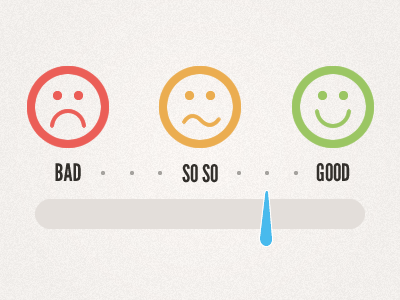How well is your call center serving your customers? In this article we explore an importnat way of measuring this via FCR also known as First Call Resolution or First Contact Resolution.
What is FCR?
An FCR or First Call Resolution is when your agent solves a customer’s problem–without escalating or transferring– in the very first call. Asa metric, it can be defined as the percentage of callers that do not require any further contacts or callbacks to address their previous reason for calling. In other words, the percentage of calls resolved within the first call.
In the context of customer support today, the definition of FCR has expanded to include contacts made by the customer on other channels such as website chat, email, in-app chats, WhatsApp, or social media. That is why in omnichannel contact centers, FCR is defined as First Contact Resolution rather than First Call Resolution.
Why should call centers calculate FCR?
Studies prove that there is a strong positive relationship between first call resolution and caller satisfaction. 1 And this makes sense. After all, we all know that today’s impatient customers want their calls and concerns addressed as fast as possible!
But apart from being a good measure of customer experience. FCR is also a key metric to measure agent efficiency or agent effectiveness. It shows that your agents are well trained. After all, if it takes multiple calls to resolve a customer query or complaint, this is eventually adding up to your cost per the complaint, and creating inefficiency within your call center.
For these reasons, FCR is an important KPI for your customer support/contact center.
How to measure FCR?
Here is a simple formula to measure FCR: Simply divide the total number of calls solved in the first attempt by the total number of calls your call center received. From the total number of calls, however, it is important to subtract the calls which are ineligible for FCR. (We explain this further down)

For omnichannel or multichannel contact centers, you go beyond calls to consider chats and emails. Or you calculate FCR with this second formula:

Key challenges & considerations for CX leaders while calculating FCR
Calculating FCR isn’t about simply applying a formula. Each call center needs to define and determine the variables that go into calculating the FCR. These should be done in a way that helps you determine a clear picture of agent performance and customer satisfaction.
Here are the main considerations.
First, define what a resolution should look like.
As shown above, to calculate FCR we require to know how many calls or cases have been solved. To do this, customer success leaders or call center managers define a call as solved, or a case as closed, either if there is no repeat-call or no escalation. In order to do this they need to define two things:
What constitutes a repeat call?
Let us consider that a customer of an eCommerce site calls to understand some payment issues. This was solved satisfactorily by your agent. However, two hours later, the same customer is making a second purchase and wants to know some specifics about that product. In this case, you cannot consider this a repeat call. That’s why it’s important that while defining “repeat calls” you now only define in how long that callback was made (a call made a week after may not a repeat call in eCommerce but it can be a repeat call when it comes to a consumer electronic product) and what the call was about.
What constitutes an escalation or transfer?
An escalation is defined as when a customer contacts you for the same issue a second time, that is when the issue was not resolved in the first contact.
Determine what constitutes an escalation is not always straightforward. For instance, some call centers may consider a barge-in or call whisper as an escalation, if the call center supervisor had to step in as an intervention. Others might consider a call transfer as an escalation. Then again, omnichannel call centers often consider the first call itself an escalation if it was preceded by an email or a chat.
Again in all these cases, call context matters. If a caller may have calls the wrong department and is then transferred by your agent using a warm transfer to the correct department, this is cannot be considered an escalation since the agent has gone out of the way to help your customer. or may need help from more than one departments to solve their problem.
Second, determine how to get this data
Now that you’ve defined what a resolution should look like, it’s time to determine how to extract this data from your contact center. There are many ways in which you can do this.
Dispositions
With call dispositions, an agent can mark a call as resolved or not, at the end of the call. However, since it is in the agent’s best interest to mark a call as resolved, you need to have checks and measures in place. Your system can be set up in such a way that a disposition marked as “resolved” is automatically reopened if there is a repeat call. Your QA team, a speech analytics system, or an SMS survey to the survey could cross-check if the issue was truly resolved satisfactorily.
Also read: How to create call dispositions
Post Call Surveys
At the end of the call, you can divert your customers to an IVR that can collect a quick response on whether or not the customer was satisfied with the call. The survey can also be sent via an automated SMS. This way you can clearly determine if the query was resolved to the customer’s satisfaction, and it gives you a much more accurate FCR. The drawback of the system is, however, that not every customer will respond to the survey.
How to improve First Call Resolution?
You cannot improve what you don’t measure. Ensuring that you are calculating your FCR is the most important step towards improving it. But now that you have begun measuring your FCR, you need to understand how to improve it. Here are some concrete steps you can take
1. Empower your Agent
Does your agent have enough information to help your customer? The information your agent requires is of two types. Firstly s/he requires customer information in order to speedily understand the call context. Secondly, they require product knowledge to resolve the issue. The first challenge can be solved by using a CRM integration. Here, screenpops will clearly display relevant customer information from the CRM on the agents window.
- Give your agent all the information they need to solve a customer’s problem. The most effective way of doing this is by creating a CRM+ telephony integration. Consider digital assistants and conferencing tools to give your agents all the help they need to solve a problem fast.
- Train your agents. Go to your reports and search your FCR by an agent. At the very top of the list is your star performer, the one agent that is able to resolve customer problems fastest. This agent can share tips and tricks on how he/she solves problems fast. Go into this agent’s call recordings. Take out a sample of a call resolved in seconds. Use this to train your other agents.
- Identify recurring customer issues.
- Use your data. Your call recordings are a valuable source of information. Study calls that escalate,to analyse what the issue could be. Use reporting & speech analytics to glean the insights they contain.
- Take agent feedback. Ask your agents what problems they face. Try to identify common problems. Use analytics to confirm their suggestions.
Good contact center software can help you achieve the stellar support you want to give your customers. Ask your contact center provider about these tools: Reporting, Speech Analytics, Multichannel Support, CRM Integrations, Customer Survey IVRs and Digital Assistants.
Ozonetel has helped its clients achieve Industry Leading FCRs of 85%. Know more about our solutions here.
References:
The mediating effects of first call resolution on call centers’ performance







